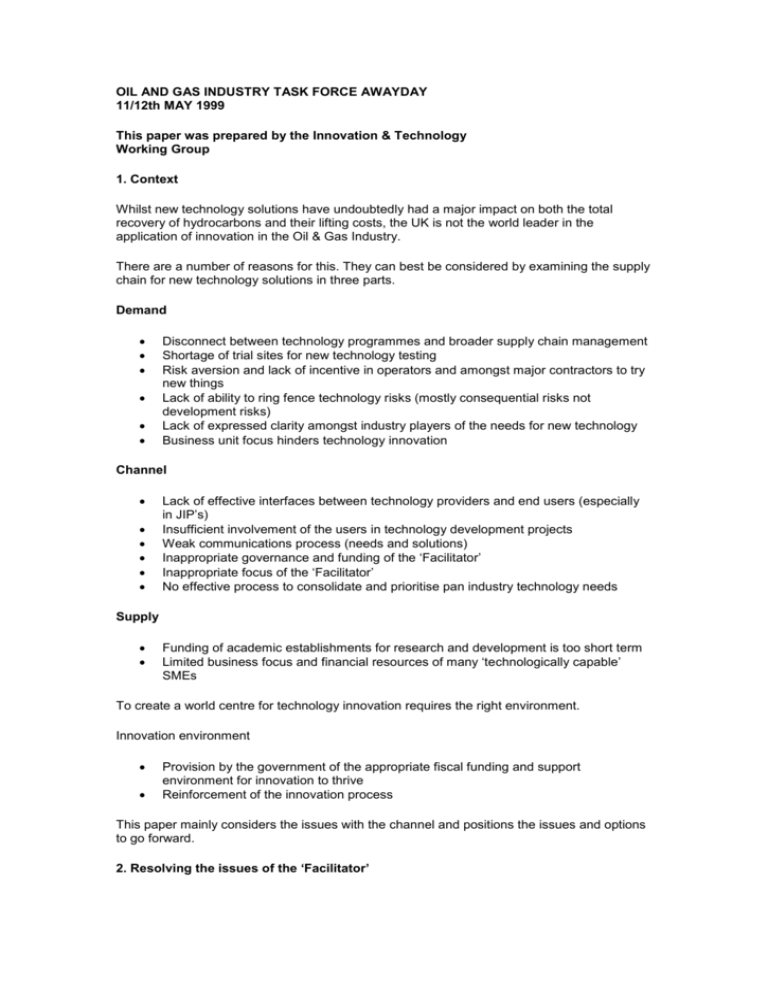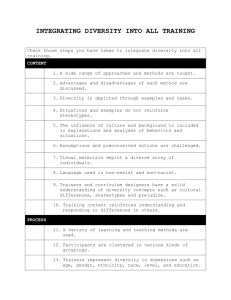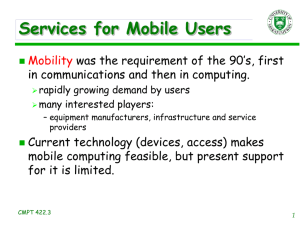oil and gas industry task force awayday
advertisement

OIL AND GAS INDUSTRY TASK FORCE AWAYDAY 11/12th MAY 1999 This paper was prepared by the Innovation & Technology Working Group 1. Context Whilst new technology solutions have undoubtedly had a major impact on both the total recovery of hydrocarbons and their lifting costs, the UK is not the world leader in the application of innovation in the Oil & Gas Industry. There are a number of reasons for this. They can best be considered by examining the supply chain for new technology solutions in three parts. Demand Disconnect between technology programmes and broader supply chain management Shortage of trial sites for new technology testing Risk aversion and lack of incentive in operators and amongst major contractors to try new things Lack of ability to ring fence technology risks (mostly consequential risks not development risks) Lack of expressed clarity amongst industry players of the needs for new technology Business unit focus hinders technology innovation Channel Lack of effective interfaces between technology providers and end users (especially in JIP’s) Insufficient involvement of the users in technology development projects Weak communications process (needs and solutions) Inappropriate governance and funding of the ‘Facilitator’ Inappropriate focus of the ‘Facilitator’ No effective process to consolidate and prioritise pan industry technology needs Supply Funding of academic establishments for research and development is too short term Limited business focus and financial resources of many ‘technologically capable’ SMEs To create a world centre for technology innovation requires the right environment. Innovation environment Provision by the government of the appropriate fiscal funding and support environment for innovation to thrive Reinforcement of the innovation process This paper mainly considers the issues with the channel and positions the issues and options to go forward. 2. Resolving the issues of the ‘Facilitator’ CMPT is currently positioned in the role of Facilitator. To adequately fulfil the Industry’s needs and address the above issues it requires a significant change in their role, funding and structure. Role The new facilitator would: Prioritise the collaborative technology development needs of the industry Communicate these needs to the technology providers Facilitate the formation of groups to address these needs (SIP’s and other means) Provide a process for technology development projects to follow (not run projects) Facilitate the provision of funding (not provide funds) Educate/inform users on technology developments and solutions Promote both ‘push and pull’ delivery of technology solutions Funding The facilitator would be funded 100% by the members. Projects would be separately funded. Structure The executive management would be by the members. The technology management would be by a wider ‘Technology Advisory Committee’ composed of key stakeholders. There would be one location (reflecting members preferences) and a leaner more cost effective organisation. 3. Barriers For the role of the ‘Facilitator’ to work and for CMPT to fulfil that role, the following barriers would need to be overcome: Lack of operator engagement Funding arrangement and financial legacy Image of CMPT and previous hands-on role in JIP’s Effectiveness of communication and clarity of the role to all players Transition issues from the old structure (e.g skills and resources) 4. What would be different that would make this work? The following would be different: o o o o o o A more vital technology development environment Clarity and singularity of role Effective funding Operators own and manage JIP’s The integrated structure of the facilitator would enable the role to be effective Clear performance measures To put this in place will require high level cross industry support. 5. Endorsements required from the OGITF Is this the right model for a facilitator Should CMPT become that facilitator Who should be the new ‘members’ Is the governance funding and structure appropriate Preferences on location How should transition be managed 6. What additional key elements should the OGITF address To make the UK a world centre for oil and gas innovation technology Fiscal incentives Ring fencing of technology risks Funding of new technology development Operator collaboration in technology development Supplier/SME support Funding of academic institutions for technology projects








